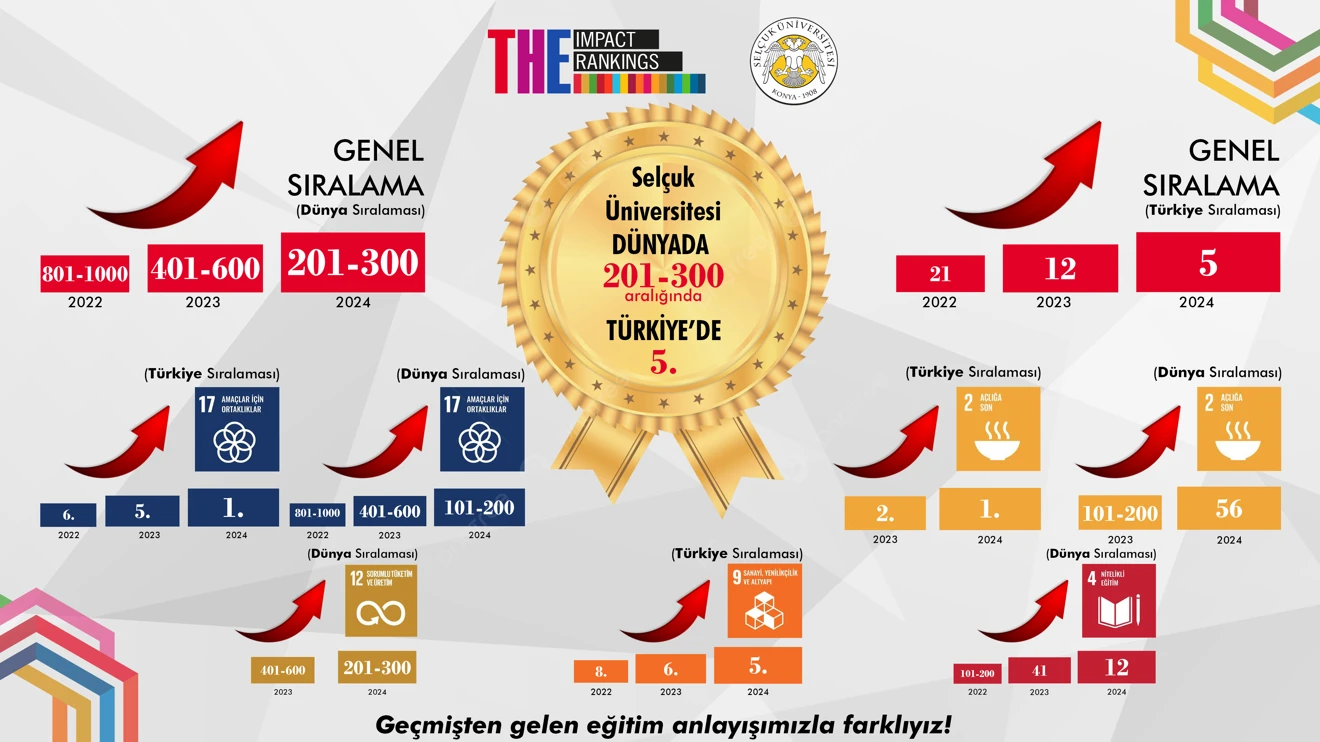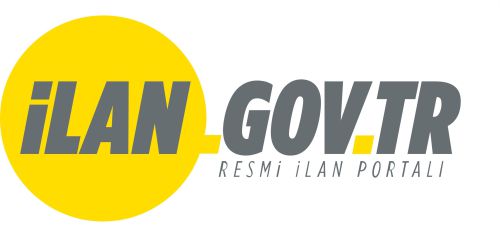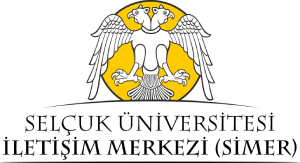Hakkında
İç Mimarlık ve Çevre Tasarımı Bölümü, Konya ve ülkemizin kültür-sanat değerlerini yükselterek çağdaş seviyeye ulaştırmak ve bu konuda yetişmiş eleman ihtiyacını karşılamak üzere 04.12.1999 tarihinde Selçuk Üniversitesi Güzel Sanatlar Fakültesi’ne bağlı olarak kurulmuştur. İç Mimarlık ve Çevre Tasarımı Bölümü, 2003-2004 Eğitim-Öğretim yılından itibaren öğrenci alımına başlamıştır.
Yükseköğretim Kurulu Başkanlığı’nın 28.01.2021 tarih ve E.6444 sayılı yazısı ile bölüm, Selçuk Üniversitesi Mimarlık ve Tasarım Fakültesi İç Mimarlık Bölümü’ne aktarılmıştır. Deneyimli, dinamik akademik kadrosunun yanı sıra geniş uygulama ve stüdyo imkanları, bilgisayar destekli tasarıma yönelik uygulamaları ile eğitim-öğretime devam etmektedir. 2013 yılına kadar özel yetenek sınavı ile öğrenci kabul eden bölüm, 2013-2014 eğitim-öğretim yılından itibaren merkezi sınav sistemi ile öğrenci kabul etmektedir. Mezunlarının “İç Mimar” ünvanı aldığı bölümde, eğitim süresi 4 yıldır.
Amacı
Geçmişin ışığında çağın gereksinimlerine uygun bir eğitim-öğretim yaklaşımının benimsendiği Selçuk Üniversitesi Mimarlık ve Tasarım Fakültesi İç Mimarlık Bölümü’nde, mesleğin gereği olan sorumluluk bilincine sahip, araştırmacı, bilimsel ve teknolojik olduğu kadar sanatsal ve düşünsel boyutları ile meslek pratiğine dönüştürecek bilgi ve becerileri kazanan öğrencilerin yetiştirilmesi amaçlanmaktadır. Gelişen ve değişen piyasa koşulları ile güncel malzeme bilgilerinin esas alındığı öğrenim sürecinde, çözüm odaklı proje geliştirme yeteneğine yönelik çalışmalar yapılmaktadır. Üniversite-Sanayi iş birliği kapsamında, öğrencilerin uygulama alanlarında yer alacağı ders içerikleri ile saha ve atölye çalışmalarına önem verilmektedir. 4 yıllık öğrenim süreci sonunda mezun olan öğrencilerin, meslek etiğinin sorumluluğuna sahip, meslek alanında hizmet verebilecekleri, yeterli donanım ve bilgi birikimine sahip olmaları öncelikli hedeftir.
Vizyon
Selçuk Üniversitesi Mimarlık ve Tasarım Fakültesi İç Mimarlık Bölümü olarak önceliğimiz, İç Mimarlık meslek etiğine uygun, ahlaki değerlere sahip, sorumluluk bilincinde bireyler yetiştirmektir. Deneyimli akademik kadromuz önderliğinde, lisans eğitimi boyunca yürütülen ders içeriklerinin ve bilgi birikimlerinin ulusal/uluslararası düzeyde olması hedefimizdir. Çağın gereksinimlerine uyum sağlayabilen, gelişen teknolojinin ışığında, sanatın evrenselliği ve araştırmacı yönleriyle bireysel ve ekip çalışmalarına uyumlu, sorumluluk sahibi, mesleki pratiği olan ve sorun çözme odaklı, bilgi ve beceri sahibi bireyler yetiştirmek amacımızdır. İç Mimarlık eğitimine yakın disiplinler ile işbirliğine önem veren, farklı disiplinler arası iletişimin önemini ve gerekliliğini savunan, mesleki bilgi aktarımı sağlanması hedeflenmektedir.
Misyon
İç Mimarlık Bölümü, 4 yıllık eğitim programı sürecinde görsel algıya dayalı, yaratıcı ve yaşanabilir iç mekanlar tasarlayan, estetik ve fonksiyonu birleştirici çözümler sunan, kullanıcıya konforlu ve yaşam kalitesini arttırıcı çağdaş iç mekanları hazırlayan, yakın çevre tasarımını oluşturabilen, gerekli bilgi ve becerilerle donatılmış 'İç Mimar' yetiştirmeyi amaçlamaktadır.
İç Mimarlık Bölümünde eğitim-öğretim içeriği kuramsal dersler, atölye çalışmaları, seminerler ve iç mimari proje çalışmalarından oluşmaktadır. Eğitim-öğretim programında; iç mimari proje dersleri ana ders olmak üzere, iç mimarlık bilgisi, akustik, aydınlatma, ince yapı elemanları, donatı tasarımı, estetik, malzeme bilgisi, strüktür bilgisi, rölöve, restorasyon, bilgisayar destekli tasarım gibi zorunlu derslerin yanında farklı uzmanlık alanlarına ait seçmeli dersler de yer almaktadır.
Gelişen teknolojiden yararlanmak amacıyla, öğrencilerin bilgisayar destekli tasarımın CAD tabanlı programlar sayesinde iki ve üç boyutlu olarak aktarılması, bölüm bünyesinde CAD konusunda uzman kişilerden oluşan eğitmenler tarafından, lisans eğitiminin ikinci sınıfından itibaren aralıksız olarak verilmektedir.
Tanım
İlk yarıyıldan itibaren verilen proje dersleri, iç mimarlık eğitiminin odak noktasıdır. İnsanın psikolojik, sosyolojik ve fizyolojik gereksinimlerini en iyi şekilde karşılamanın kuramsal temelinin verildiği proje derslerinde, teknik ve teorik derslerde elde edilen bilgilerin uygulanması esastır. İlk yılda tasarım metotları, mekan kavramı ve analizi, iç mimari anlatım-iletim tekniklerine giriş yapılırken, ikinci yıldan itibaren taşıyıcı sitem bilgisi, malzeme bilgisi, akustik, aydınlatma gibi derslerle kuramsal bilgilere ağırlık verilmektedir. Üçüncü sınıftan itibaren, sıhhi tesisat, havalandırma, donatı tasarımı ve çevre tasarımı konusunda uygulamalı çalışmalar önemli yer tutmaktadır. Son yılda ise öğrenilen kuramsal bilgilerin pratiğe dönüştürüldüğü bitirme projesi başta olmak üzere, evrensel tasarım, ekolojik tasarım, rölöve, restorasyon, yapı metraj ve keşif konularında dersler verilmektedir.
Program Dili
Türkçe
İstihdam
İç Mimarlık ünvanı ile, ilgili kamu kurum ve kuruluşlarında, özel sektörde ve farklı alanlardaki iş ortamlarında faaliyet gösterebilirler.
Mezun Şartı
Programda mevcut olan (toplam 240 AKTS karşılığı) derslerin tümünü başarıyla tamamlayan ve 4.00 üzerinden en az 2.00 ağırlıklı not ortalaması elde eden, 30 iş günü ofis ve 30 iş günü şantiye olmak üzere toplamda 60 iş günü mesleki stajını yapan öğrenciler `İç Mimar' unvanı ile mezun olmaya hak kazanırlar.
Kabul Şartları
2013-2014 Eğitim-Öğretim dönemi ve sonrası için ÖSYM tarafından yapılan Merkezi Yerleştirme Sistemi ile öğrenci alınacaktır.
Önceki Öğrenim Tanımı
Programa yatay geçiş ve dikey geçiş ile gelen öğrenciler, daha önce alıp başarılı oldukları derslerden, uygun ders içeriklerine ve yeterli krediye sahip ise yönetim kurulu kararı ile muaf tutulabilirler.
Üst Derece Progamlar
Yüksek lisans, doktora programlarına veya sanatta yeterlilik programlarına başvurabilirler.















.png)


